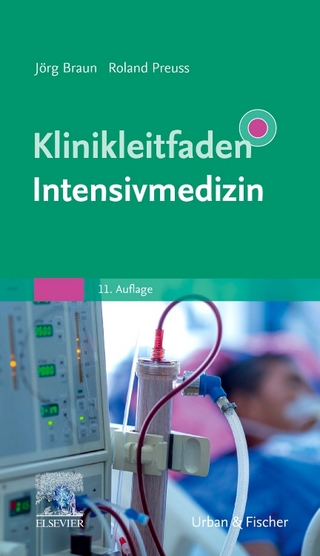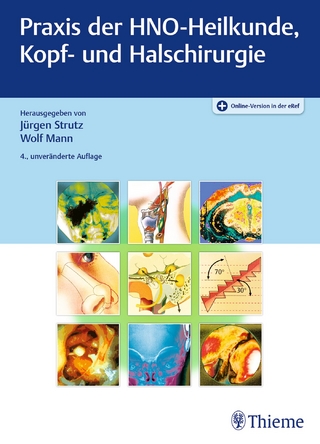
Annual Review of Hydrocephalus
Springer-Verlag Berlin and Heidelberg GmbH & Co. K
978-3-540-52937-8 (ISBN)
- Titel ist leider vergriffen;
keine Neuauflage - Artikel merken
I) Experimental & Basic Studies.- (1) Congenital Hydrocephalus in HTX-rats: Incidence, pathophysiology, and developmental impairment.- (2) The Etiology of the Congenital Hydrocephalus in the Inbred Rat LEW/Jms: Light microscopic study in the embryonic stage.- (3) Experimental Hydrocephalus and Hydrosyringomyelia: Computer tomographic studies.- (4) Neuropathology of Congenital Hydrocephalus in the SUMS/NP Mouse.- (5) A Quantitative Golgi Study of Cortical Pyramidal Neurons in Congenitally Hydrocephalic Rats-HTX.- (6) Morphological Study on Congenital Hydrocephalus of the Inbred Rat, LEW/ Jms: Changes in the cerebral gray matter.- (7) Changes in Periventricular Vasculature of Rabbit Brain Following Induction of Hydrocephalus and after Shunting.- (8) Pseudoventricle Formed in Grafted Neural Tissue and a New Hydrocephalic Model Using the Neural Transplant Method (Part 2).- (9) Changes of Muscarinic Cholinergic Receptors and Cholinergic Neurons in Experimental Acute Hydrocephalic Rat Brains.- (10) Pathogenesis of Cerebral Disturbances on Experimental Hydrocephalus: Transmission and scanning electron microscopic observations in experimental hydrocephalic rats.- (11) Clinical and Ultrastructural Observations of Maturing Human Frontal Cortex: Part 1. Biopsy material of hydrocephalic infants.- (12) Minor CSF Pathways in Experimental Hydrocephalus.- (13) Changes on Blood-Brain Barrier Permeability in Experimental Hydrocephalus.- (14) Cerebroventricular Dilation in Spontaneously Hypertensive Rats (SHRs) Is Not Attenuated by Reduction of Blood Pressure.- (15) Evoked Potentials Produced by the Electrical Stimulation Applied to the Optic Chiasm in the Rat with Asymmetrical Hydrocephalus.- (16) Suppression of Hippocampal Long-term Potentiation in Hydrocephalic Rat.- (17) Evaluation of Brainstem Auditory Evoked Responses in Congenital Hydrocephalus.- (18) Electroencephalographs Findings in Hydrocephalic Children Prior to Initial Shunting.- (19) The Effect of V-P Shunt on Local Cerebral Glucose Utilization in HTX Congenital Hydrocephalic Rats.- (20) Alteration of Atrial Natriuretic Peptide Binding Sites in Rat Choroid Plexus with Experimental Hydrocephalus.- (21) Changes in Intraventricular Pressure and Brain Lipids in Experimental Hydrocephalus.- (22) Quantitative Fatty Acid Composition and Monoamine Metabolites in CSF from Congenital Hydrocephalic Children During the Myelination Period.- (23) Cerebral Metabolism in Hydrocephalic Animals: Comparison of water, electrolytes and energy metabolism in brain tissues between congenital and acquired hydrocephalic rats.- (24) Histochemical Study of Estrogen Receptor in Hydrocephalic Rat Brain.- (25) Spatial Memory Disruption in Hydrocephalic Rats Assessed in the Radial Arm Maze.- II) Pathophysiology.- (1) Establishment of a Cerebrospinal Fluid Bank.- (2) Hydrodynamics and CSF Flow Through a Shunt in Hydrocephalus.- (3) Intracranial Arterial Duplex Doppler Waveform Analysis in Infants.- (4) Treatment of Symptomatic Syringomyelia with a Ventriculoperitoneal Shunt: A case report with magnetic resonance scan correlation.- (5) CSF Pulse Wave, ICP, and Autoregulation.- (6) Relationship Between Plateau Waves and Respiration: Experimental study in kaolin-induced hydrocephalic dogs with normal intracranial pressure.- (7) The Value of Estimating Pressure-volume Index in Childhood Macrocephaly.- (8) Threshold of Cerebral Perfusion Pressure as a Prognostic Factor in Hydrocephalus During Infancy.- (9) Outcome of Pregnancy in Patients with Unexplained Elevated or Low Levels of Maternal Serum Alpha-Fetoprotein.- III) Symptomatology.- (1) Macrocephaly: Definition and classification.- (2) Familial Occurrence of Congenital Anomalies of the Central Nervous System.- (3) Optic Glioma with Progressive Occlusion of the Aqueduct of Sylvius in Monozygotic Twins with Neurofibromatosis.- (4) Benign Intracranial Hypertension Treated with Ventriculoperitoneal Shunting: Case report.- (5) A Hyperthermic Syndrome in Two Subjects with Acute Hydrocephalus.- (6) Sudden Infant Apnea and Insidious Hydrocephalus.- (7) Ventricular and Sulcal Size at the Onset of Psychosis.- IV) Diagnostic Procedures.- (1) Relationship Between Cerebrospinal Fluid Flow Through the Ventriculo-peritoneal Shunt and Computed Tomographic Images of Hydrocephalic Patients.- (2) The Effect of L-threo-DOPS in Metrizamide Encephalopathy with Persistent Consciousness Disturbance and Extrapyramidal Symptoms.- (3) Observation of the CSF Pulsatile Flow on MRI (2): The signal-void phenomenon and its relation to the intracranial pressure.- (4) Consideration of the Diagnosis and Treatment of Fetal Hydrocephalus.- (5) Prenatal Diagnosis of Cysts of the Fetal Choroid Plexus.- (6) Screening of the Central Nervous System in Neonates and Infants with Neurosonography.- V) Therapeutic Procedures.- (1) Ventriculopleural Shunts for Hydrocephalus: A useful alternative.- (2) Subcutaneous Absorption of Cerebrospinal Fluid in an Infant with Hydrocephalus.- (3) An Easily Replaceable Intracranial Catheter.- (4) Conversion of a Lumboperitoneal Shunt to a Lumboatrial Shunt Through Femoral Catheterization: Technical note.- (5) Technical Note: The removal of free peritoneal catheters in the revision of ventriculoperitoneal shunts.- (6) Modified Puncture Needle for Percutaneous Needle Trepehination.- (7) Manometric Ventricular Trocar: A new shunting apparatus with intraventricular fluid pressure monitoring.- (8) Experiences of Shunt Operation with Programmable Pressure Valve in Infants.- (9) Experience with Shunting Operations Using Double Lumen Ventricular Catheters in Hydrocephalic Patients.- (10) Factors Affecting Cerebrospinal Fluid Flow in a Shunt System.- (11) Shunts, Indications, Problems and Characteristics.- (12) Shunt Malfunction in Childhood Hydrocephalus: Classification of malfunction sites in the shunt system.- (13) Causal Factors of Shunt Revisions: With special reference to frequent and immediate revisions.- (14) Analysis of Malfunctioning Shunts in the Management of Hydrocephalus.- (15) Gliomatosis Cerebri Presenting with Hydrocephalus and Dementia.- (16) A Clinical Study on Shunt Revision: Comparison in children and adults.- (17) Ventricular Shunt Functioning Despite Extraventricular Location of the Catheter Tip as Revealed by Computed Tomography.- (18) Function of Parietal and Frontal Shunts in Childhood Hydrocephalus.- (19) Cerebrospinal Fluid Eosinophilia and Sterile Shunt Malfunction.- (20) Treatment of Ventriculostomy-related Infections.- (21) Origin of Organisms Infecting Ventricular Shunts.- (22) Corynebacterium Group JK Pathogen in Cerebrospinal Fluid Shunt Infection: Report of two cases.- (23) CNS Toxicity Associated with Intraventricular Injection of Cefazolin.- (24) Electroencephalographic Findings and Epilepsy in the Slit Ventricle Syndrome of Shunt-treated Hydrocephalic Children.- (25) Slit Ventricle Syndrome with Aqueduct Stenosis: Third ventriculostomy as definitive treatment.- (26) Isolated Fourth Ventricle: Review of seven cases.- (27) Symptomatic Low Intracranial Pressure in Shunted Hydrocephalus.- (28) A Case of Shunt Nephritis and a Review of the Literature.- (29) Cephalhydrohematocele Due to Catheter Valve Disconnection Following Ventriculoperitoneal Shunting.- (30) Traumatic Intratumoral Hemorrhage Secondary to Ventriculoperitoneal Shunt.- (31) Central Nervous Cryptococcosis Giving Rise to Ascites after Ventriculo-peritoneal Shunting: Case report.- (32) Delayed Intracerebral Hemorrhage Following VP Shunt Operation.- (33) Marked Cerebrospinal Fluid Collection Associated with Hepatic Failure.- (34) Peritoneal Cerebrospinal Fluid Pseudocyst: A complication of ventriculoperitoneal shunts.- VI) Follow-Up & Long-Term Result.- (1) Prenatal Hydrocephalus: Outcome and prognosis.- (2) Etiology and Prognosis in Hydrocephalus.- (3) Poor Prognostic Factors for Enlarged Subarachnoid Spaces in Infants.- VII) Individual Form of Hydrocephalus.- (1) Clinical Analysis with 51 Cases of Meningocele and Meningomyelocele, with Special Reference to Hydrocephalus.- (2) Evaluation of Shunt Treatment in Hydrocephalus with Myelomeningocele: Some factors relating to mental prognosis.- (3) Experience with Simultaneous Ventriculo-peritoneal Shunt Placement and Myelomeningocele Repair.- (4) Resolution of Syringomyelia and Chiari I Malformation by Ventriculoatrial Shunting in a Patient with Pseudotumor Cerebri and a Lumboperitoneal Shunt.- (5) A Case of Dandy-Walker Malformation: Consideration on the teratogenic period and sleep structures.- (6) NMR Images of Non-communicating Hydrocephalus Associated with Dandy-Walker Variant and Achondroplasia.- (7) Holoprosencephaly with Dandy-Walker Cyst Diagnosed in Utero by MRI: Report of a case.- (8) A Case of Congenital Unilateral Hydrocephalus.- (9) Neuroradiological Evaluation of Dorsal Cyst Malformations.- (10) To Shunt or to Fenestrate: Which is the best surgical treatment for arachnoid cysts in pediatric patients?.- (11) Postoperative Course of the Size of Arachnoid Cyst in the Middle Fossa.- (12) Approximation of the Split Brain Surface in an Infant with Schizencephaly and Multiple Brain Anomalies.- (13) Hydrocephalus in Craniosynostosis.- (14) Symptomatic Hydrocephalus: Initial findings in brainstem gliomas not detected on computed tomographic scans.- (15) A Case of Neonatal Choroid Plexus Papilloma.- (16) Slow Reduction in Ventricular Size after Removal of Choroid Plexus Papilloma: Case report.- (17) Hydrocephalus and Intraspinal Tumor.- (18) Congenital Intramedullary Teratoma Involving the Entire Spinal Cord and Brain Stem Associated with Hydrocephalus.- (19) The Subcutaneous Ventricular Reservoir: An effective treatment for posthemorrhagic hydrocephalus.- (20) Management of Posthemorrhagic Hydrocephalus in the Extremely Low-Birth-Weight Infant: Treatment with a subcutaneous ventricular catheter reservoir.- (21) Biphasic Ventricular Dilatation Following Posterior Fossa Subdural Hematoma in the Full-term Neonate.- (22) Hydrocephalus after Aneurysmal Subarachnoid Hemorrhage.- (23) The Amount of Blood in CSF and Degree of Hydrocephalus Studied with CT as Compared to Clinical Condition and Concentrations of Various Substances in Human CSF after Subarachnoid Haemorrhage.- (24) Effect of Cisternal Drainage after Early Operation for Ruptured Intracranial Aneurysms.- (25) Hydrocephalus and Vasospasm after Subarachnoid Hemorrhage from Ruptured Intracranial Aneurysms.- (26) Obstructive Hydrocephalus Due to a Giant Aneurysm of the Internal Carotid Bifurcation.- (27) Hydrocephalus and Tuberculous Meningitis in Children: Report on 26 cases.- (28) Acute Hydrocephalus in Infectious Spinal Disorder.- (29) The Diagnosis of Idiopathic "Normal Pressure" Hydrocephalus: Clinical features, CT and epidural pressure recording.- (30) Indications for Shunting in Normal Pressure Hydrocephalus: Time-dependent analysis of EEG and intracranial pressure.- (31) Biochemical Investigation of Normal Pressure Hydrocephalus in the Assessment of Shunt Effectiveness.- (32) Reduction of Ventricular Size after Shunting for Normal Pressure Hydrocephalus Related to CSF Dynamics before Shunting.- (33) Natural History of Subdural Effusion in Infants: Prospective study of 87 cases.- (34) MRI of Subdural Fluid Collection in Infants.- (35) Surgical Treatment for Infantile Subdural Fluid Collections.- (36) Subdural Fluid Collections in Infancy.- (37) Brain Damage Due to Head Trauma in a Patient with Compensated Hydrocephalus: Case report.- Author Index.
| Erscheint lt. Verlag | 7.12.1990 |
|---|---|
| Zusatzinfo | 56 black & white illustrations, biography |
| Verlagsort | Berlin |
| Sprache | englisch |
| Maße | 138 x 216 mm |
| Gewicht | 765 g |
| Themenwelt | Medizin / Pharmazie ► Medizinische Fachgebiete ► Chirurgie |
| Medizin / Pharmazie ► Medizinische Fachgebiete ► Neurologie | |
| Naturwissenschaften ► Biologie ► Humanbiologie | |
| Naturwissenschaften ► Biologie ► Zoologie | |
| ISBN-10 | 3-540-52937-3 / 3540529373 |
| ISBN-13 | 978-3-540-52937-8 / 9783540529378 |
| Zustand | Neuware |
| Informationen gemäß Produktsicherheitsverordnung (GPSR) | |
| Haben Sie eine Frage zum Produkt? |
aus dem Bereich


